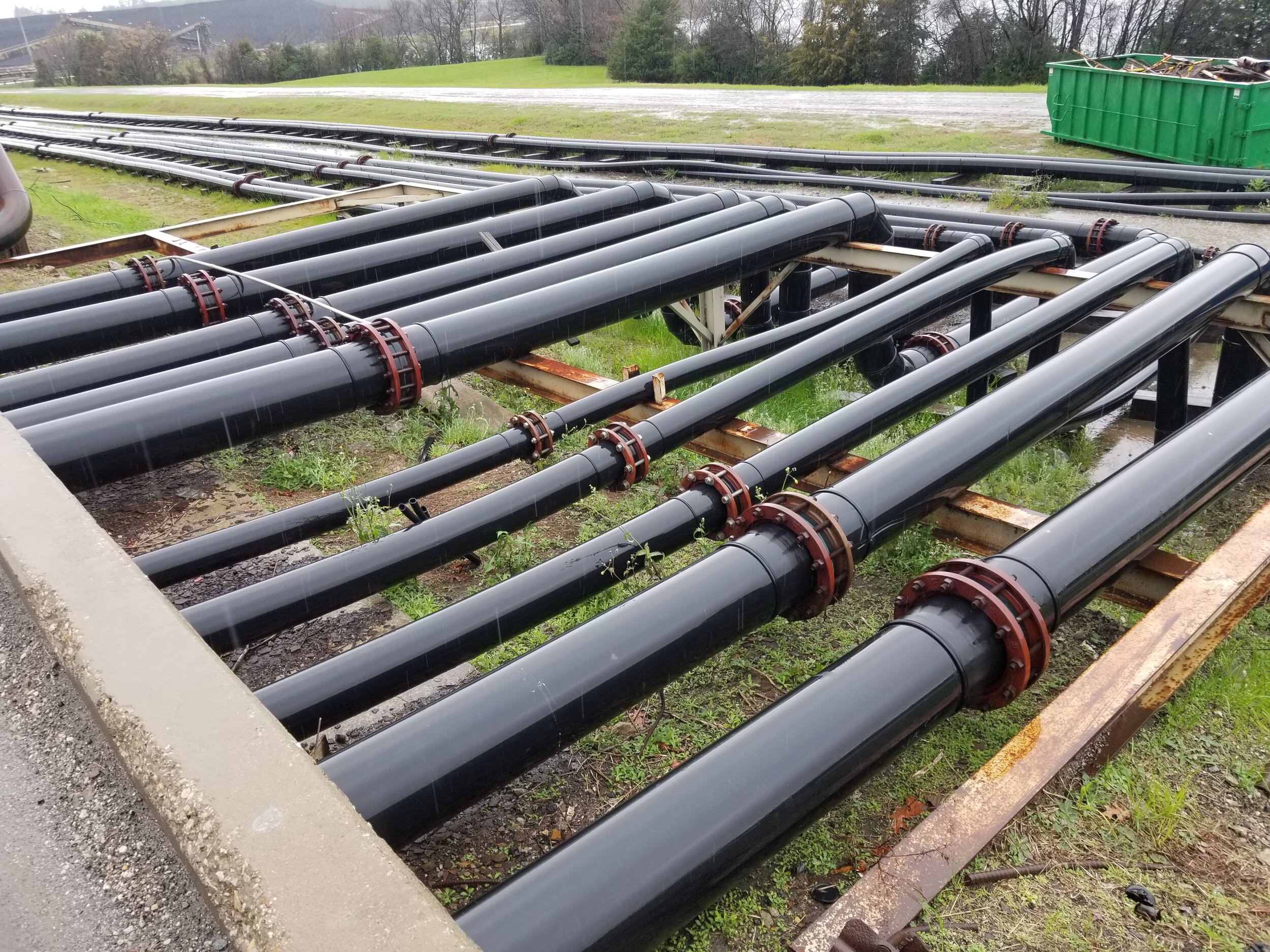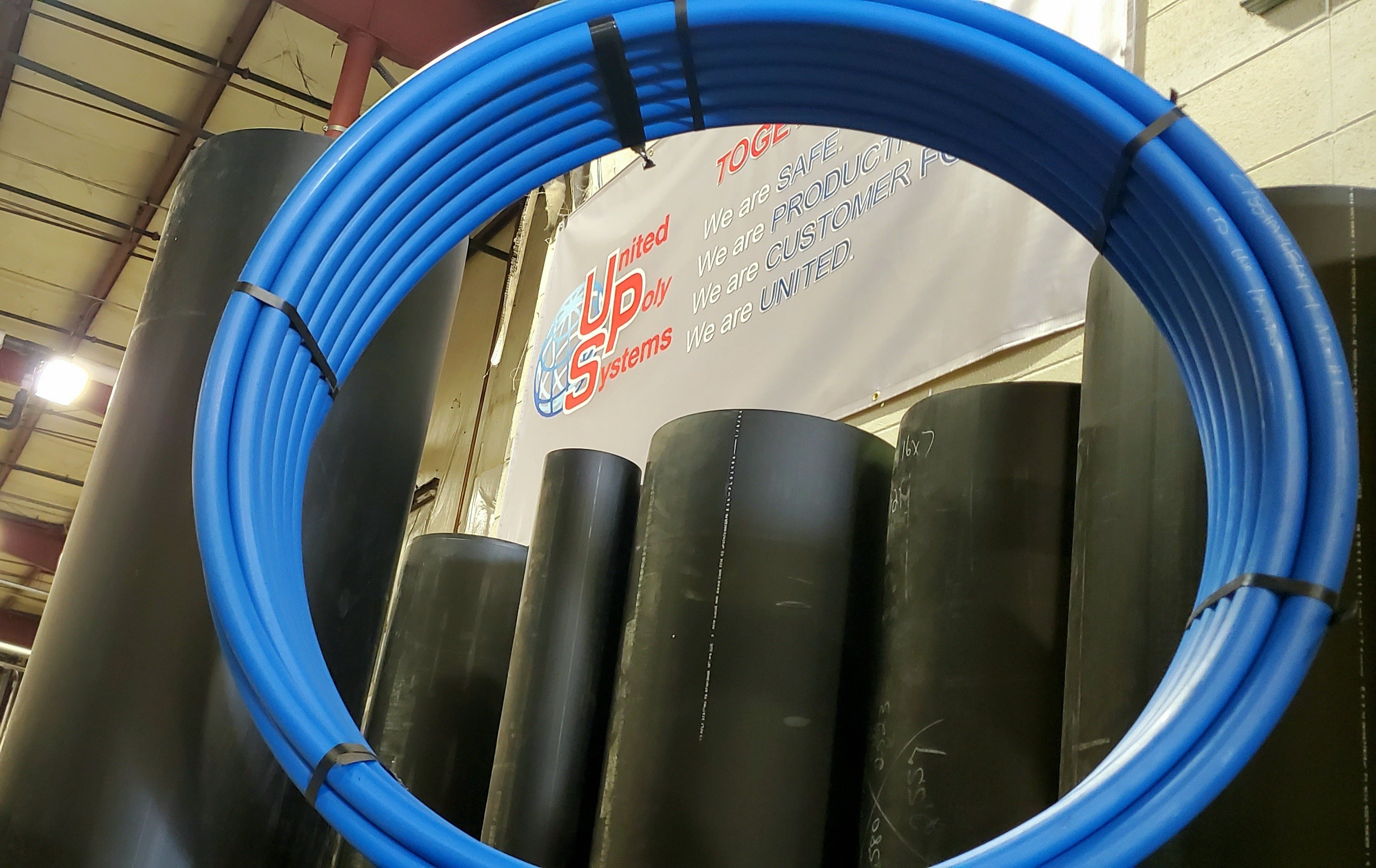Key Insights of custom hdpe pipe manufacturing Midland TX for Tailored Performance
Explore the Production Process Behind High-Quality HDPE Pipeline and Its Applications
The manufacturing procedure of high-grade HDPE pipelines is complex and systematic. It starts with the choice of basic materials that enhance efficiency. Following this, ethylene undergoes polymerization to create material, which is then shaped with extrusion. Quality assurance is vital, guaranteeing that the last item satisfies rigorous requirements. However, the trip of HDPE pipelines doesn't end with manufacturing. Their applications throughout numerous markets expose a wider relevance worth taking a look at.
Understanding HDPE: Characteristics and Advantages

High-density polyethylene (HDPE) is a flexible polycarbonate recognized for its toughness and resistance to various ecological factors. This material shows excellent tensile toughness, making it ideal for demanding applications. Its low-density framework contributes to a light-weight item, assisting in ease of managing and setup. HDPE additionally showcases exceptional resistance to chemicals, which minimizes degradation when exposed to rough substances.
The product's reduced moisture absorption further enhances its longevity, making it perfect for usage in pipelines and storage containers. In addition, HDPE is resistant to ultraviolet (UV) radiation, making sure that items keep their honesty also when revealed to sunlight. Moreover, its versatility allows for the production of intricate shapes without endangering stamina. The eco-friendly nature of HDPE, commonly derived from recycled products, adds to its appeal, advertising sustainable practices in manufacturing. Generally, these properties and advantages make HDPE a recommended selection for different industrial and consumer applications.
Raw Product Option for HDPE Manufacturing
The choice of resources for HDPE production is vital to verify the end product meets the wanted specs and top quality criteria. High-density polyethylene (HDPE) is mainly generated from polymerized ethylene, originated from fossil gas such as gas or petroleum. The quality of these feedstocks significantly affects the mechanical and thermal properties of the final HDPE.
Additives also play a significant function in boosting HDPE's efficiency, consisting of antioxidants, UV stabilizers, and colorants, which improve longevity and resistance to ecological elements. The choice process should take into consideration not just the chemical composition of the raw products however likewise their processing features to guarantee reliable production.
The sourcing of raw products should focus on sustainability and compliance with ecological guidelines, as accountable techniques are critical in today's market. Inevitably, cautious basic material choice lays the structure for producing high-grade HDPE pipelines appropriate for varied applications.
The Extrusion Refine: Shaping HDPE Pipeline
The extrusion procedure plays a crucial role fit HDPE pipes, beginning with meticulous material prep work strategies that guarantee ideal circulation and uniformity. Just as essential is the layout of the die, which directly influences the last measurements and surface area quality of the pipeline. With each other, these variables contribute considerably to the efficiency and high quality of HDPE pipe manufacturing.
Material Preparation Methods
Reliable manufacturing of HDPE pipes starts with meticulous material preparation techniques, especially the extrusion process. Throughout this stage, high-density polyethylene resin is very first dried to remove dampness, making certain perfect flow characteristics. The resin is then fed into the extruder, where it undergoes heating and melting, transforming into a viscous state. This heating procedure is thoroughly managed to maintain the material's honesty and performance. The liquified HDPE is compelled via a die, forming it right into a continuous pipeline type. Appropriate temperature level monitoring during extrusion is vital, as it directly affects the product's residential or commercial properties and the end product quality. Once formed, the HDPE pipeline is cooled down and reduced to specified sizes, all set for succeeding handling and applications.
Die Design Importance
Precision in die design plays a vital function in the extrusion procedure of HDPE pipelines. The die acts as the last shaping device, directly affecting the pipe's dimensions, wall surface density, and surface finish. A properly designed die guarantees consistent material circulation, lowering problems such as abnormalities and weak areas. The geometry of the die should be maximized to website fit the specific residential or commercial properties of HDPE, including its thickness and thermal behavior throughout extrusion. Furthermore, the cooling price of the material as it goes through the die can noticeably impact the pipeline's architectural integrity. Consequently, buying advanced die modern technology is vital for producers aiming to create high-quality HDPE pipes that fulfill sector requirements and consumer expectations.
Top Quality Control Measures in HDPE Manufacturing
Various variables affect the high quality of HDPE pipe manufacturing, efficient top quality control procedures are vital to assure uniformity and integrity in the last item (custom hdpe pipe manufacturing Midland TX). Secret high quality control methods include extensive material evaluation, validating that the raw polyethylene fulfills well-known standards for pureness and density. Throughout the extrusion procedure, specifications such as temperature, stress, and cooling time are very closely kept track of to preserve dimensional precision and structural stability
In enhancement, post-production testing is important; suppliers frequently perform hydrostatic tests to examine the pipe's stamina and resistance to pressure. Aesthetic examinations for surface area issues further improve quality control. Accreditation from appropriate criteria organizations, like ASTM or ISO, provides an added layer of integrity. By carrying out these comprehensive quality control steps, producers can reduce problems, boost efficiency, and make sure that the HDPE pipes satisfy the certain requirements of different applications, ultimately resulting in client fulfillment and rely on the item.
Applications of HDPE Pipe Throughout Industries
HDPE pipes are utilized across various sectors because of their resilience and versatility. In water circulation systems, they ensure efficient shipment, while in wastewater management, they provide reliable solutions for waste transport. Additionally, farming irrigation networks profit from HDPE's resistance to rust and versatility, making it an ideal choice for modern-day farming techniques.

Water Distribution Solutions
A considerable number of sectors count on high-density polyethylene (HDPE) pipelines for effective water circulation systems. Recognized for their durability and resistance to rust, HDPE pipes are commonly made use of in metropolitan water supply networks, farming watering, and commercial applications. Their light-weight nature helps with easy handling and setup, decreasing labor costs and time. Additionally, HDPE pipes can accommodate numerous stress levels, making them appropriate for both low and high-pressure systems. American Plastics HDPE Pipe for Oilfield. The flexibility of the material permits for seamless combination into existing facilities, decreasing the requirement for considerable excavation. HDPE's resistance to chemical seeping warranties that the water delivered remains safe and tidy, making it an ideal choice for maintaining the top quality of drinkable water throughout various sectors.
Wastewater Administration Solutions
Reliable water circulation systems also lead the means for cutting-edge wastewater monitoring solutions, where high-density polyethylene (HDPE) pipelines play a considerable role. Distinguished for their toughness and resistance to corrosion, HDPE pipes are perfect for delivering wastewater in various setups. Their flexibility enables easy setup in complex atmospheres, lessening the need for extensive excavation. Furthermore, HDPE's smooth indoor surface area lowers rubbing, enhancing circulation rates and efficiency. These pipes are additionally immune to chemical leaching, making sure that pollutants do not compromise the surrounding environment. Industries, districts, and therapy facilities significantly count on HDPE pipes for their integrity and longevity, making them a favored selection for modern-day wastewater monitoring systems. This versatility emphasizes the critical significance of HDPE pipelines throughout countless applications.
Agricultural Irrigation Networks
Agricultural watering networks profit greatly from making use of high-density polyethylene (HDPE) pipelines, which offer effective and trustworthy water distribution to crops. HDPE pipes are lightweight, making them easy to transport and set up, while their flexibility permits numerous arrangements in diverse surfaces. These pipelines show outstanding resistance to corrosion, chemicals, and UV radiation, making certain durability in harsh farming environments. Furthermore, their smooth interior surface area minimizes rubbing loss, maximizing water circulation and reducing energy expenses linked with pumping. The longevity of HDPE pipes, typically surpassing 50 years, adds to decrease upkeep and substitute costs. Subsequently, farmers progressively depend on HDPE pipes to improve watering performance and promote sustainable agricultural practices, inevitably bring about enhanced plant returns and source preservation.
Future Patterns in HDPE Pipeline Innovation
As the demand for lasting and efficient facilities expands, developments in HDPE pipeline technology are positioned to transform numerous sectors. Arising fads consist of the combination of wise modern technologies, such as sensing units and IoT abilities, which facilitate real-time tracking of pipe conditions, reducing upkeep expenses and preventing leakages. In addition, the growth of sophisticated manufacturing methods, such as 3D printing, is making it possible for the manufacturing of complex, tailored pipe layouts that satisfy certain task needs.
The focus on recycling and circular economy techniques is driving the technology of HDPE pipelines made from recycled materials, improving sustainability. Boosted jointing methods, such as electro-fusion and mechanical installations, are also improving installation efficiency and integrity. The expanding focus on environmental policies is pushing manufacturers to take on greener production processes, guaranteeing that HDPE pipelines not only meet industry standards but also promote an even more lasting future for infrastructure growth.
Frequently Asked Questions
Just How Does HDPE Contrast to Various Other Plastic Products?
HDPE exceeds numerous other plastic products concerning resilience, chemical resistance, and versatility. Its low thickness and high tensile strength make it perfect for different applications, frequently surpassing alternatives in both performance and long life.
What Are the Environmental Influences of HDPE Manufacturing?
The environmental impacts of HDPE manufacturing consist of greenhouse gas discharges, power intake, and prospective contamination from producing processes. In addition, inappropriate disposal can bring about soil and water contamination, elevating issues concerning long-lasting eco-friendly impacts.
Can HDPE Pipeline Be Reused?
Yes, HDPE pipes can be reused. Many centers approve utilized HDPE for handling, changing it into brand-new products. This reusing adds to sustainability initiatives, reducing plastic waste while preserving resources and power in the production cycle.
What Is the Life Expectancy of HDPE Piping?

Exactly How Do Temperature Level Variations Impact HDPE Pipe Efficiency?
Temperature level variations considerably impact HDPE pipeline performance, affecting flexibility and toughness. High temperature levels can bring about softening, while reduced temperatures might create brittleness, eventually influencing the pipeline's durability and viability for different applications in diverse environments.